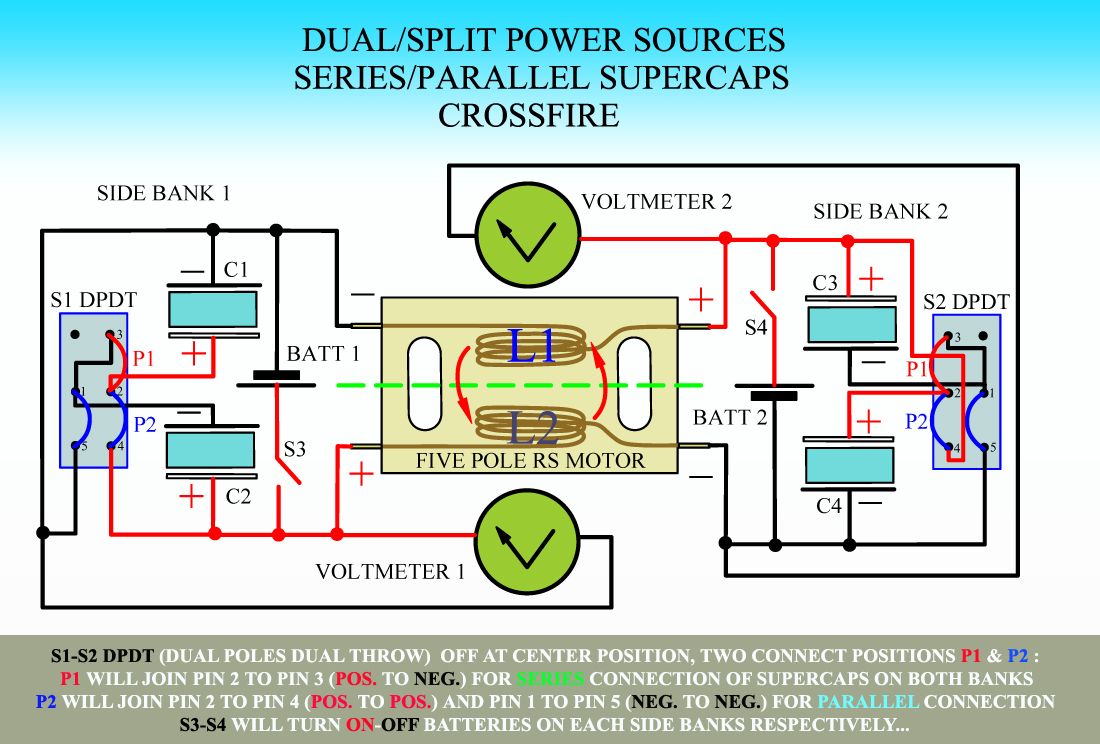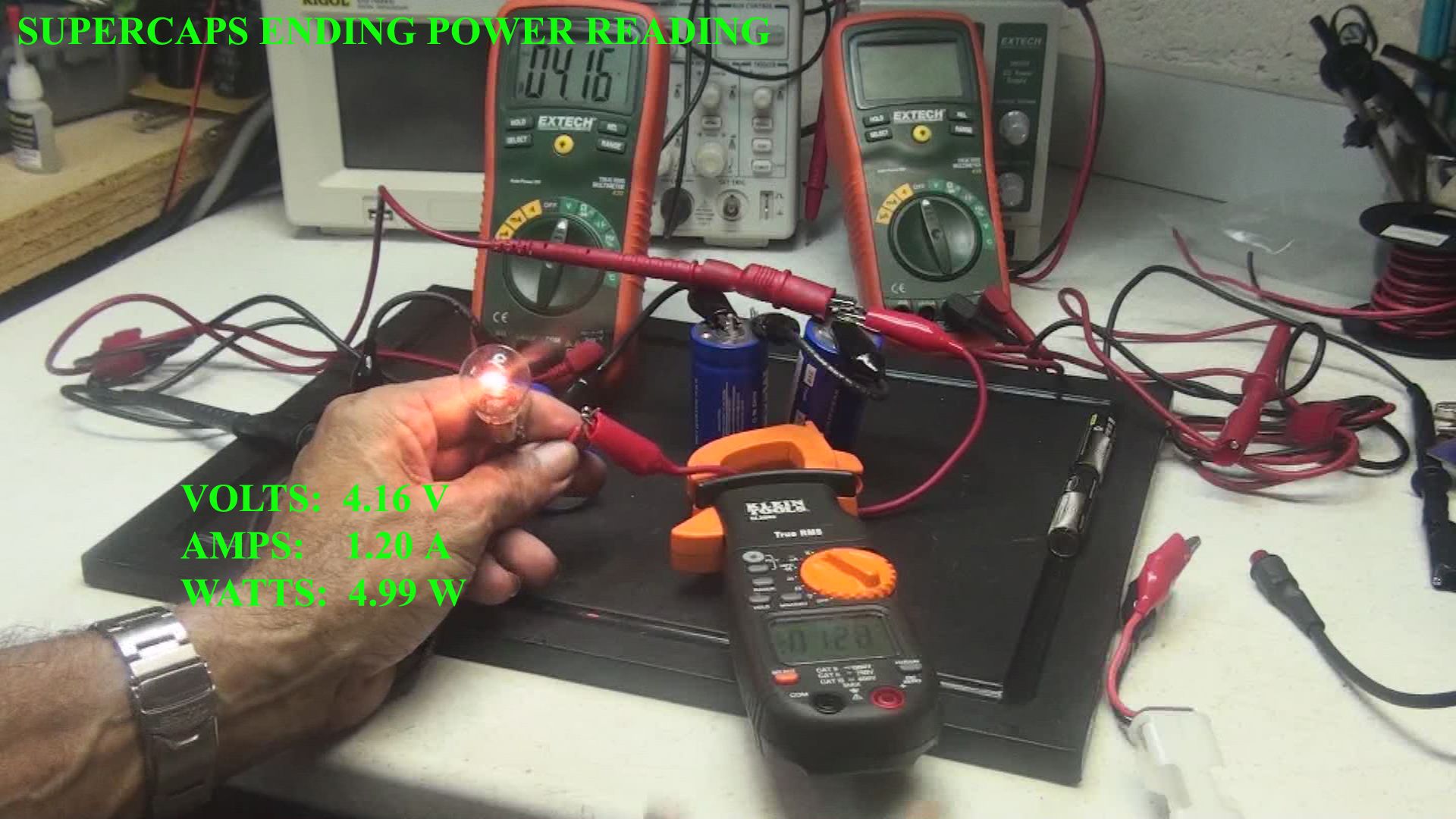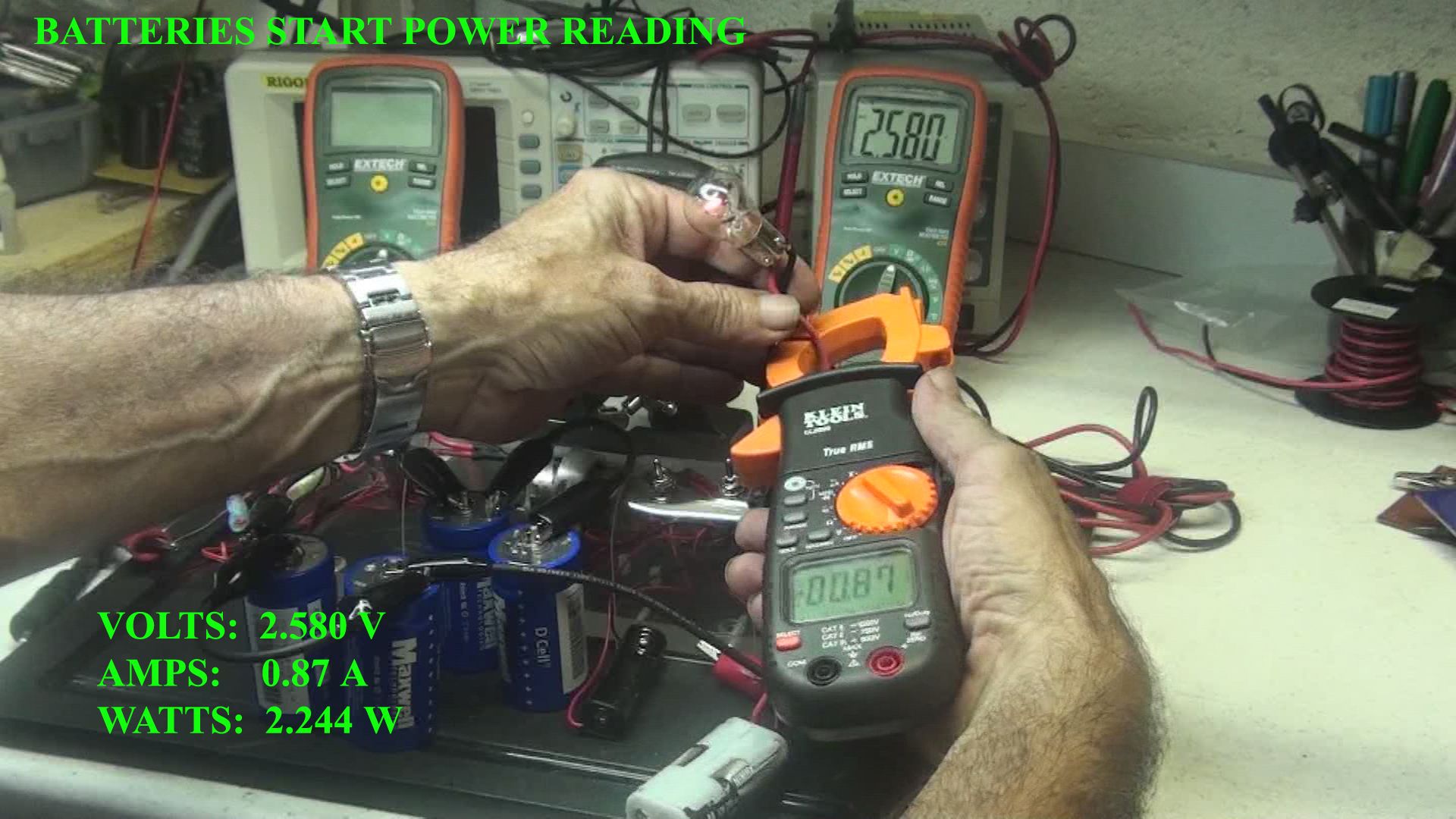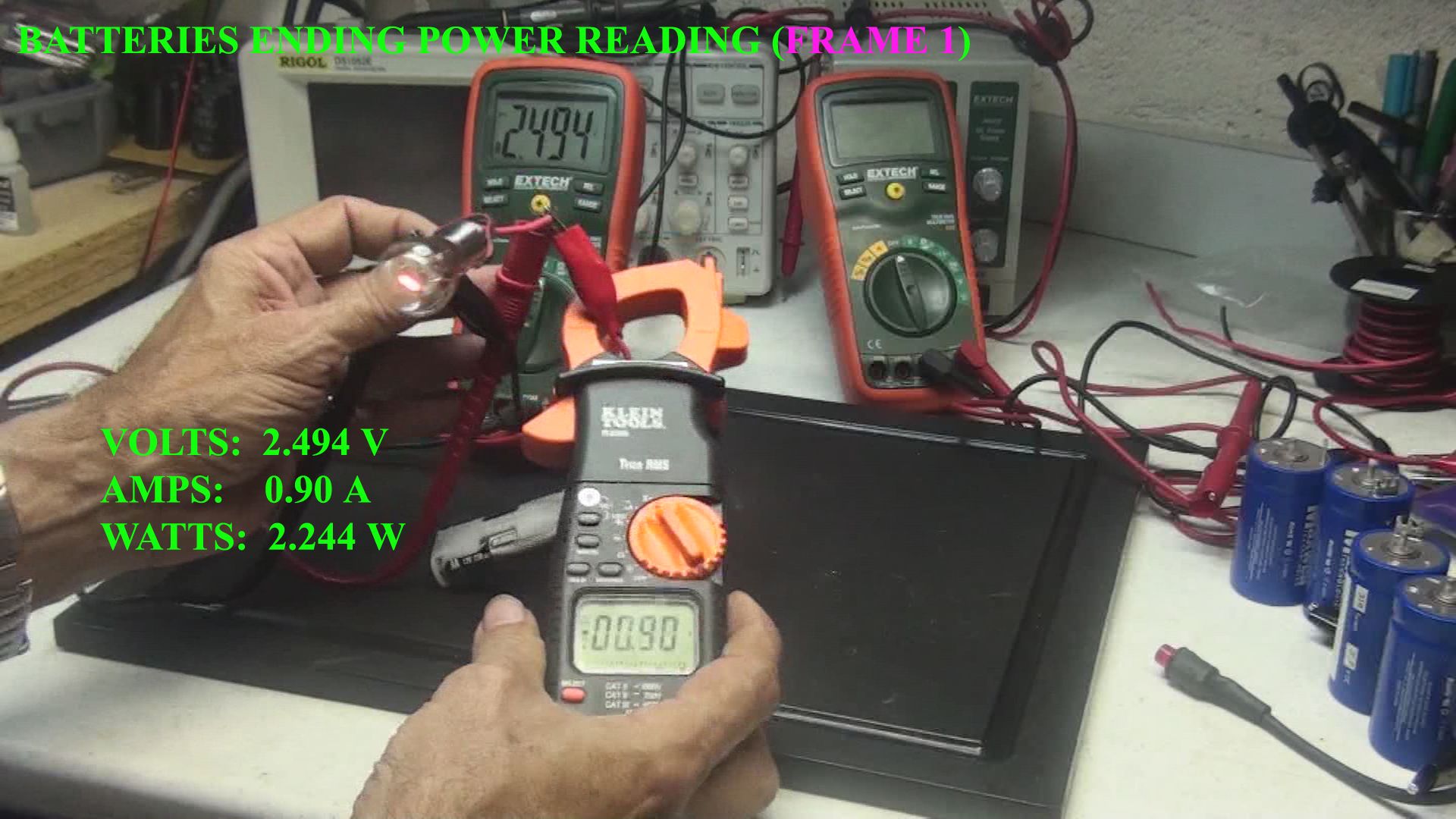Originally posted by DadHav
View Post
First, on interpreting the Video you are right on some points, and on some you are not right...why?, just because you may have not watched the Three Previous Videos on this Run, mainly the THIRD VIDEO...where I show the connections I am using...and it is down below:
[IMG]
 [/IMG]
[/IMG]But in general terms I believe the Last Video Test is a very simple demonstration...and we could complicate it if we wanted to...by analyzing Batteries Capacities and random behaviors... or Super Caps Capacities of discharge through Time...I really do not want to get into that Analysis at this point.
The Video is simple, and the Time it takes to show Caps Loaded does not matter, (I see you are starting measuring 22 seconds) as a matter of fact I could have it ON for One Nano Second, as long they show how much power they have gained...that is enough for me.
The Discharge Capacity of every Cap over time is different, according to their Capacitance Values, plus the way we hook them...We all know that...but, the main point I am demonstrating here is not the Capacitive Discharge over Time...but How much the Caps ended up as Power/Energy Density is concerned.
And I will go based on The First Frame Reading for Both Batteries and Capacitors...the Decay Curves over Time of Both, I really do not want to discuss here, or on my video, because that is not the point, however, I will do show them, like I have loaded the sequenced pictures/frames here as well...
[IMG]
 [/IMG]
[/IMG]The Supercaps (First Reading) ended up with 4.16 Volts at 1.20 Amps, and that is 4.99 Watts...rounding it up to 5.0 Watts...as shown on Picture above.
1-On another observation, it is easy to notice the amount of Light emitted from the same Bulb above, by the Four Caps in Series compared to Initial and End Batteries emitted light, also connected in Series...
[IMG]
 [/IMG]
[/IMG][IMG]
 [/IMG]
[/IMG]2-Total Time it took Machine to charge Super Caps was around Eleven (11) Minutes...and I am building the Time Graph on this in more detail.
3-On another very Important "Judgement Call" if We may call it that way...If We are to be fair measuring this Energy Input-Output...We should go by: "Total Energy Wasted to Generate the Total Energy Achieved"...and Not the Full Input...that did not go anywhere...is there...right?
4-We also need to consider...We are disregarding completely our Mechanical Output on this Test.
John, I know how to Scale Up this whole Test...using bigger Capacitive Banks, that would take much longer to discharge...bigger Poles/Coils Machines with independent In/Out Gates, that would take lesser time and more energy density to put out...and of course, bigger Battery Banks...but the point with this test is to observe/establish the Differences between Starting Power and Generated Power.
Other words, Input Wattage versus Output Wattage in order to calculate "Unity" if Under or Above, COP, and Efficiency. Therefore, I don't see any sense to be analyzing how many Milli Amps or Milli Volts were lost here or there, when we have both parameters...or V and A(V,I)...therefore, a more General and Complete Parameter that represents Fully Energy and Power...meaning Watts.
Now, my question to you is simple:
Do You see Over Unity on this System as demonstrated on this Video, based on Input Watts versus Output Watts of the whole System...No matter if it was for One Minute or Two Seconds...?
I believe the question is simple, so a simple answer will do.
Ufopolitics







Comment